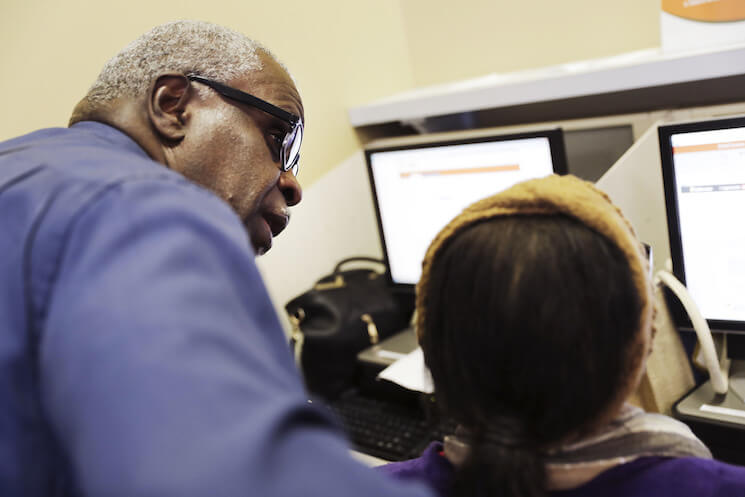
The highly-esteemed Mark Thoma sends us to Paul Krugman. In praise of real science: “Some people… always ask, ‘Is this the evidence talking, or my preconceptions?’ And you want to be one of those people…”.
Paul’s most aggressive claim is that our economics profession in 2007 would have done a much better job of economic analysis and policy guidance in real time had it consisted solely of clones of Samuelson, Solow, Tobin–I would add Modigliani, Okun, and Kindleberger–as they were in 1970: that the vector of net changes in macroeconomics in the 1970s were of zero value, and that the vector of net changes in macroeconomics since have been of negative value as far as understanding the world in real time is concerned.
This is, I think, too strong–and Paul does not quite make that claim. Doug Diamond and Phil Dybvig (1983)? Andrei Shleifer and Rob Vishny (1997)? And, of course, that keen-sighted genius Paul de Grauwe (2011).
Paul K. might respond that:
- Paul de G. is very close to a clone of Jim Tobin who spent fifteen years as a member of the Belgian parliament, to which I can only say “touché”.
- And you could say that Diamond-Dybvig and Shleifer-Vishny are simply mathing-up Kindleberger (1978), or perhaps Bagehot (1873). But there is great value in the mathing-up.
- And I am going to have to think about why I have so much softer a spot in my heart for Uncle Milton Friedman than Paul K. does.
But in essentials, yes: Rank macroeconomists in 2007 by how much their intellectual trajectory had been influenced by the gravitational pull o fEd Prescott, Robert Lucas, and even Milton Friedman. Those whose trajectories had been affected least understood the most about the world in which we have been enmeshed since 2007:
Paul Krugman: What Have We Learned From The Crisis?:
We’ve seen a lot of vindication for old, unfashionable ideas–oldies but goodies that got deemphasized, and in some cases effectively blackballed, in the decades following the 1970s, but have turned out to be remarkably useful practical guides….
I was always a bit unsure about my own bona fides. Obviously I’d been a professional success, but why? Was it truly because I’d been making a real contribution to our understanding of how the world works, or was I simply good at playing an academic game?… Then came the crisis… and… several immediate questions in which popular intuitions and simple macroeconomic models were very much at odds. Would budget deficits cause interest rates to soar? Practical men said yes; economists, at least those of us with certain tools in our boxes, said no. Would huge increases in the monetary base cause runaway inflation? Yes, said practical men, politicians, and a few economists; no, said I and others of like mind. Would fiscal austerity depress output and employment? No, said many important people; on the contrary, it would be expansionary, because it would raise confidence. Yes, a lot, said Keynesian-minded economists. And my team won three out of three. Goooaaal!…
Economists from 1970 or so… might well have done a better job responding to the crisis than the economists we actually had on hand…. Tobin was one of the last prominent holdouts against the Friedman-Phelps natural rate hypothesis…. Friedman, Phelps, and their followers argued that any attempt to hold unemployment persistently below the natural rate would lead to ever-accelerating inflation; and their models implied, although this is rarely stressed, that an unemployment rate persistently above the natural rate would lead to ever-declining inflation and eventually accelerating deflation. Tobin was, however, skeptical…. Phillips tradeoffs that persist in the long run, at least at low inflation….
For reasons not completely persuasive to me, the standard response of macroeconomists to the failure of deflation to materialize seems to be to preserve the Friedman-Phelps type accelerationist Phillips curve, but then assert that expected inflation is “anchored”, so that it ends up being an old-fashioned Phillips curve in practice. We can debate why, exactly, we’re going this way. But… Tobin’s 1972 last stand against the natural rate turns out to be a better guide to the post-2008 landscape than just about anything written in the 35 years that followed….
The U.S. Federal funds rate hit zero in late 2008, with the economy still in a nosedive. The Fed responded with the first round of quantitative easing…. Meanwhile, the budget deficit soared…. What effect would these radically unusual policies have? The answer from quite a few public figures was to predict soaring inflation and interest rates. And I’m not just talking about the goldbugs… Allan Meltzer and Martin Feldstein warned about the coming inflation, joined by a Who’s Who of the Republican establishment. Academics like Niall Ferguson and John Cochrane warned about massive crowding out of private investment. But old-fashioned macro, with something like IS-LM at its base, offered startlingly contrary predictions at the zero lower bound…. And sure enough, inflation stayed low, as did interest rates.
IJT-style macro also made a prediction about the output effects of fiscal policy – namely, that it would have a substantial multiplier at the zero lower bound…. Chicago’s Cochrane insisted that the old-fashioned macro behind it had been “proved wrong.” Robert Lucas denounced Christina Romer’s use of multiplier analysis as “shlock economics,” basing his argument on a garbled version of Ricardian equivalence…. Jean-Claude Trichet sunnily declared that warnings about the contractionary impact of austerity were “incorrect”…. A few years on, and the old-fashioned Keynesian analysis looks pretty good… a multiplier around 1.5…. Which just happens to be the multiplier Christy Romer was assuming….
But wait, we’re not quite done. One aspect of the post-2008 story that apparently surprised many people, even smart economists like Martin Feldstein, was that huge increases in the monetary base didn’t seem to produce much rise in broader monetary aggregates, leading to claims that something strange was going on–that maybe it was all because the Fed was paying interest on excess reserves. But the same thing happened in Japan in the early 2000s, without any special interest payments….
The bottom line is that the crisis and its aftermath have actually provided a powerful vindication of macroeconomic models. Unfortunately for many economists, the models it vindicates are more or less vintage 1970. It’s far from clear that anything later added to our ability to make sense of events, and developments in macro over the course of the 80s and after may even have subtracted value….
What looks useful is a sort of looser-jointed approach: ad hoc Hicks-Tobin-type models, with simple models of financial market failure on the side…. For those seeking a definitive, integrated approach this will seem pitifully inadequate; and if I were a young academic seeking tenure I’d run away from all of this and either do empirical work or shun macro altogether. But models don’t have to rigorously dot all i’s and cross all t’s–let alone satisfy the peculiar criteria that modern macro calls “microfoundations”–to be very useful in practice…



